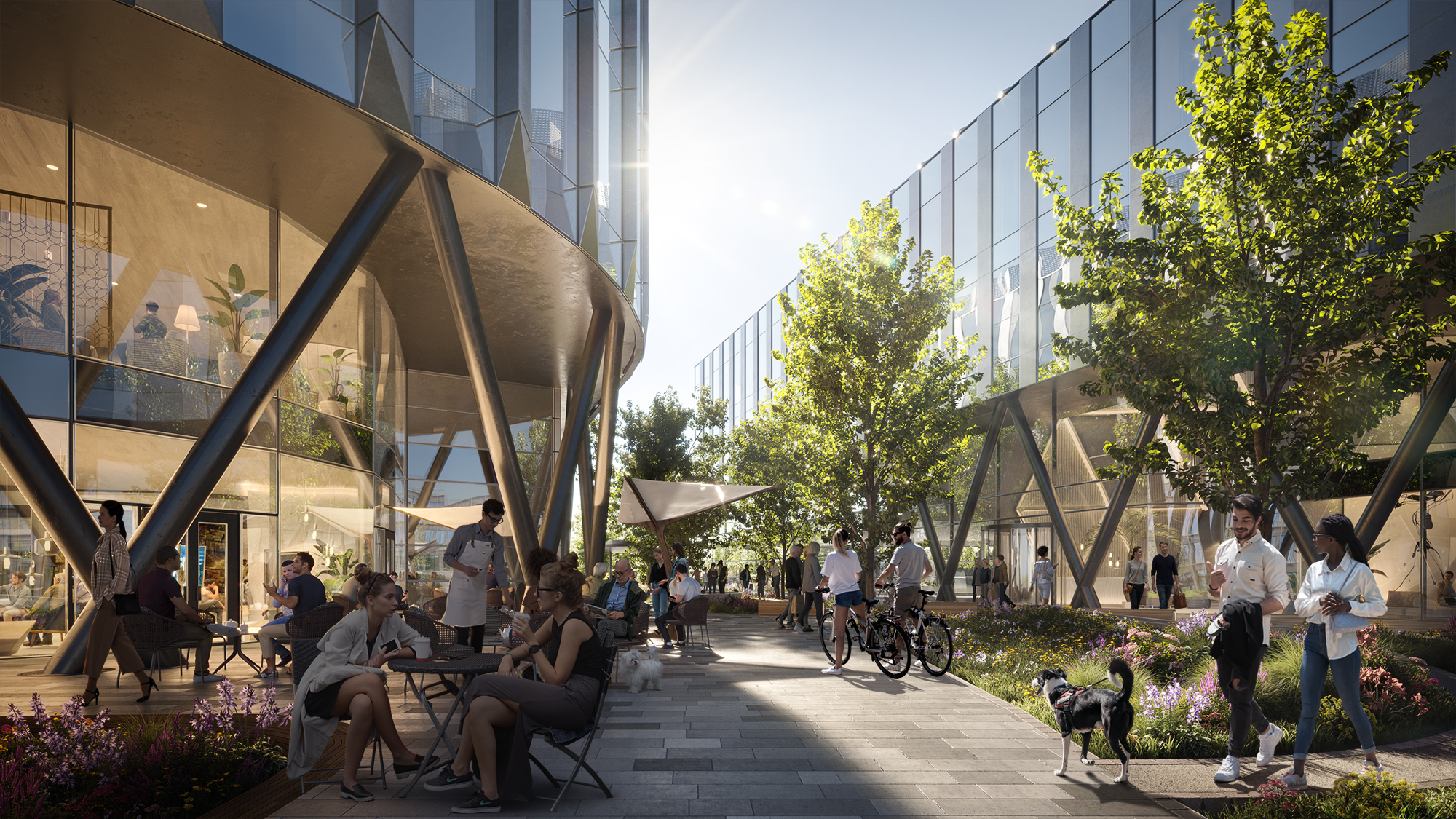The Oxford Science Park is majority owned by Magdalen College, Oxford, and is at the heart of its strategy to support discovery, innovation and entrepreneurship.
The strong performance of the office and lab markets over the last six months highlights the potential of science and tech for the UK economy. The expansion plans of fast-growing science companies have been stalled as they wait for available laboratory stock to come forward.
Oxford Science Park’s 86,000 sq ft Iversen Building, due for completion in summer 2023, is the next laboratory building to complete in Oxford; with current demand for lab space hitting nearly 2 million sq ft in Oxford and Cambridge, according to Bidwells’ latest research.
Plots 23-26 on The Oxford Science Park are part of long-term, ambitious development plans to help meet this demand through the creation of exemplary additional office and laboratory space over the next three years. This additional capacity will support the growth of existing occupiers, providing flexibility with their space requirements, and enabling new companies to join the Park’s unique community.
In reinforcing Oxford’s position as a world-leading centre for scientific discovery and invention, the buildings are designed to the highest quality with wellbeing, biodiversity and sustainability at the heart of the design process. Walkable pedestrian areas are key to the design. The four-storey buildings will feature active frontages with cafés and co-working spaces at ground level, and define a range of external working and amenity spaces between them. The below podium parking is screened from the pedestrian realm by active frontages and massing.
The landscape design creates a fully biodiverse habitat featuring native species and improving the existing condition, whilst brown roofs where possible are being included on each building. Careful modelling of each building’s orientation and facade ensures excellent levels of internal natural light, with passive design principles that reduce the need for cooling as much as possible.
Use of steel and cement-based materials within the buildings is minimised while the design itself is highly adaptable, and can be demountable and redesigned for future re-use.
Use of stairs is promoted rather than lifts to encourage not only physical wellbeing but serendipitous interactions, critical in research and collaboration. ‘Views out’ from permanent workspaces are encouraged, with designs and internal layouts that support this feature for occupant wellbeing.
























